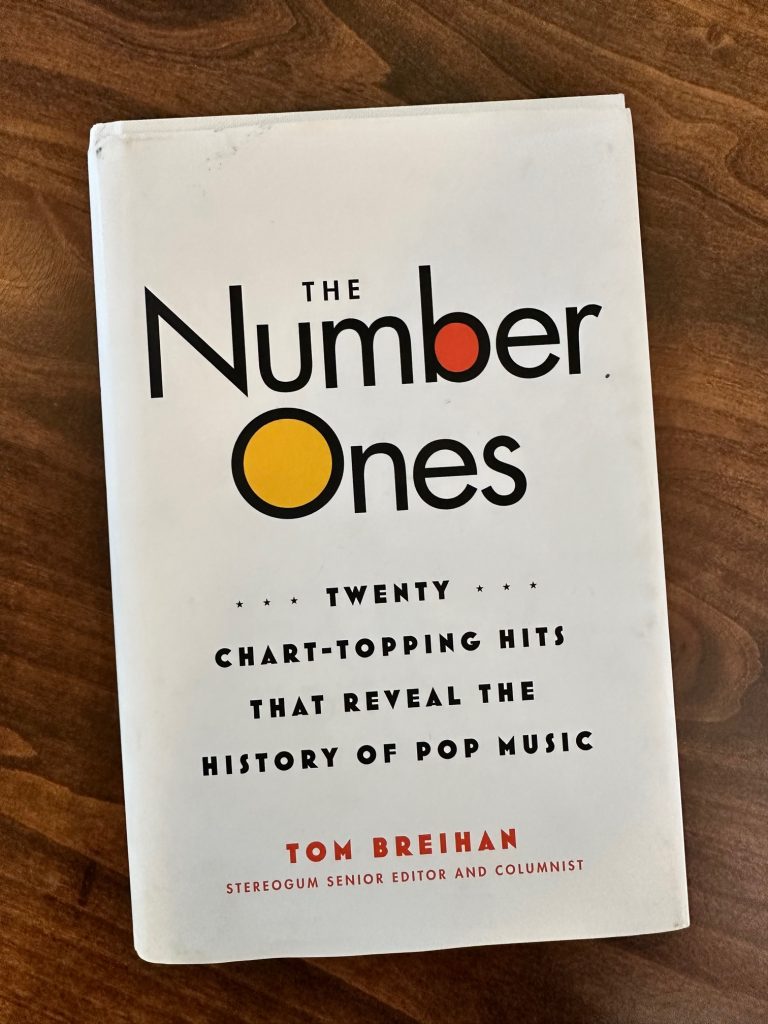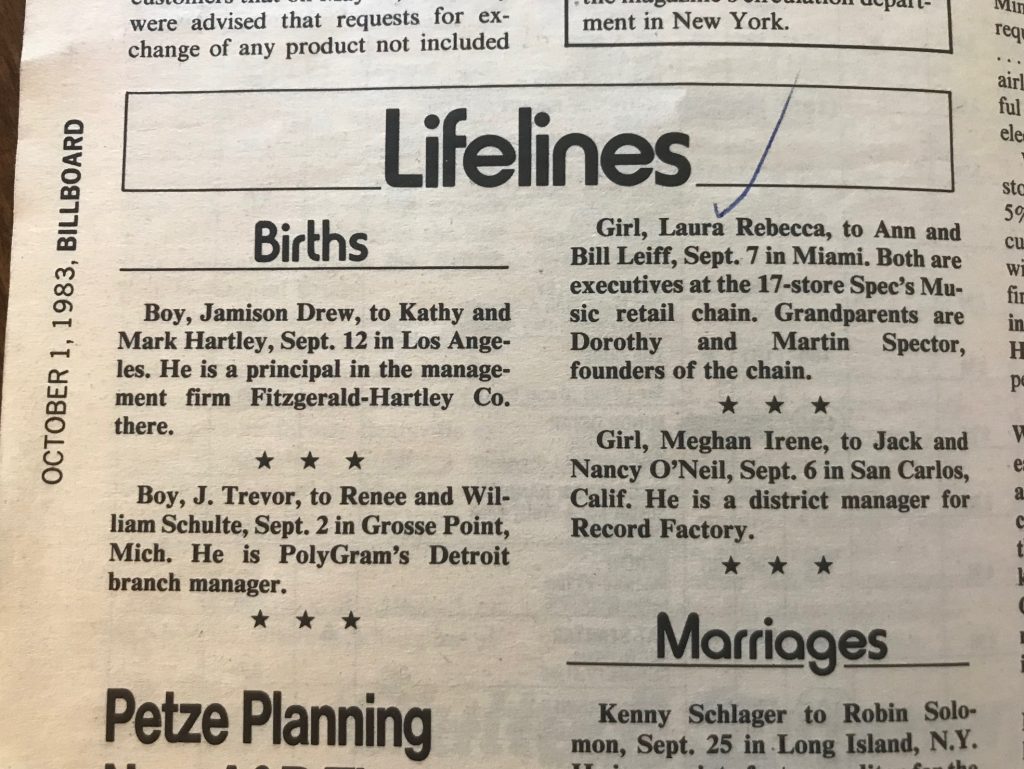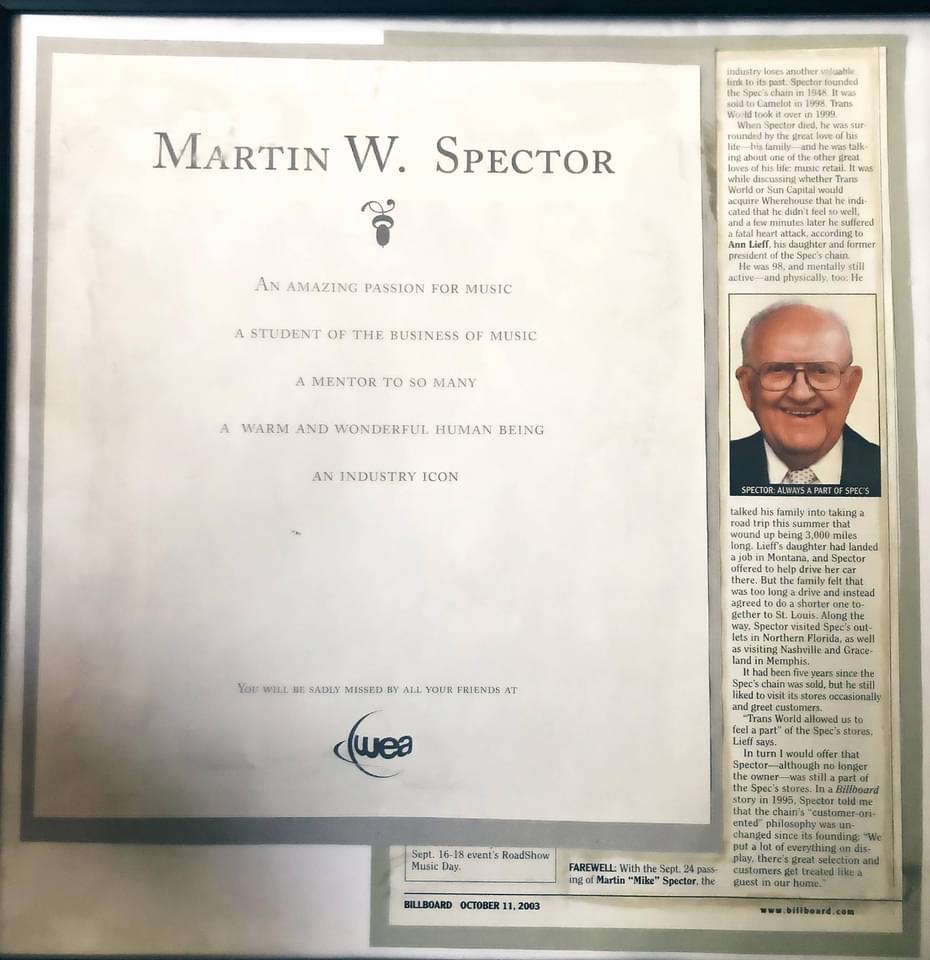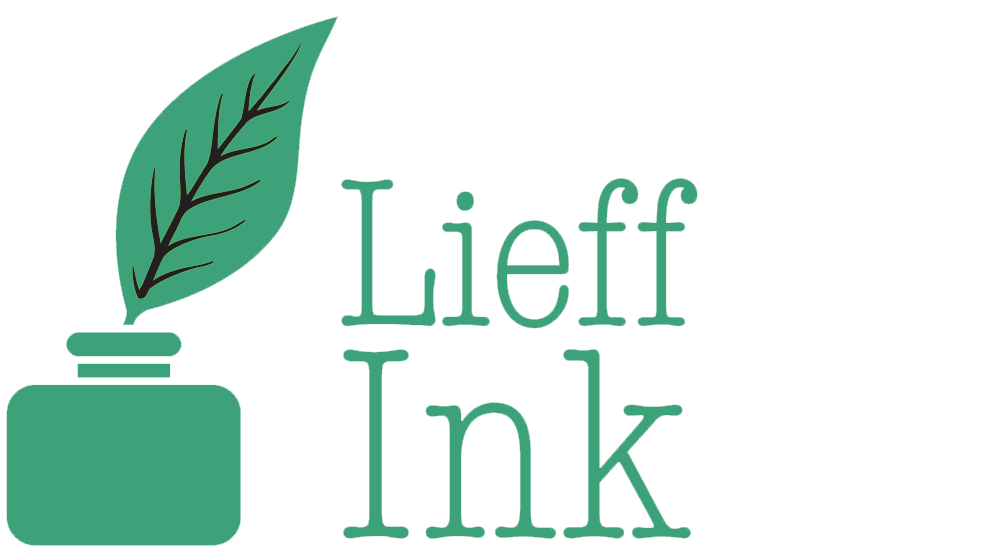 Songs provide the soundtrack of our lives so of course reading the backstories of a selection of number one Billboard hits was something I wanted to read. If nothing else, I wanted to find out why author Tom Breihan – who is the senior editor for the music website Stereogum and has written for Pitchfork, A.V. Club, and GQ, among other publications – chose to highlight the particular songs in the book.
Songs provide the soundtrack of our lives so of course reading the backstories of a selection of number one Billboard hits was something I wanted to read. If nothing else, I wanted to find out why author Tom Breihan – who is the senior editor for the music website Stereogum and has written for Pitchfork, A.V. Club, and GQ, among other publications – chose to highlight the particular songs in the book.
In the introduction of The Number Ones, he talks about how Billboard came to be and how the charts have, well, charted the trajectory and success of certain songs in a variety of genres for a variety of reasons. I remember my grandfather and mother reading Billboard every week – it was like the music bible for record stores – and how weird it was when the magazine stopped selling subscriptions. Breihan says that “some of these hits tell us a whole lot about where the world was and where popular tastes had shifted.” He’s right –some songs are forever aligned with specific memories and that’s the magic of music.
A few interesting Billboard facts:
• The magazine started in 1894!
• In 1940, Billboard published its first chart which covered sales of 78-RPM singles.
• When 1958 rolled around, the main charts were combined into the Hot 100 – “the one true chart that would keep a running tally of the most popular records in America.”
• Some huge hits never surpassed #2 including “Like a Rolling Stone,” “Material Girl,” “Nuthin’ but a ‘G’ Thang,” and “Since U Been Gone” which shows how hard it really is to reach #1.
• One of the main aspects of Breihan’s overall thesis is that “every hit song has a story” and “those hits…tell a strange, twisty, self-contradictory tale about what America wants in a pop song.” And Billboard was there to record it all.
• My birth announcement was in Billboard in 1983.
• In 2003, the magazine honored my grandfather after he passed away. 
Organized into 20 chapters, the 20-song list – which begins with Chubby Checker’s “The Twist” and ends with BTS’ “Dynamite” – is comprehensive but also subjective. Breihan clearly did his research but (regardless of what he says about being a music critic in the final chapter) it’s obvious which bands and artists are his favorite and which ones are not. For example, he is not an Aerosmith fan but loves Van Halen. The latter didn’t get a chapter, but Van Halen is recognized several times throughout the book. In the intro, he does say that the book examines 20 “game-changing singles that have hit #1 on the Hot 100 in the years after 1958’s ‘Poor Little Fool’” and acknowledges that, although they aren’t the best singles in history, they are great songs.
In chapter 8, the author talks about how, in Fleetwood Mac’s 50-year history, only one song hit number one – even though Rumours seems like a greatest hits album. In terms of timing, Breihan points out that “Fleetwood Mac used their whole complicated saga to drive their celebrity, and Warner Bros. used their celebrity to drive sales.” Brilliant. If people wanted to know what was going on with the band and all their entanglements, they would have to buy the album. Music is timing, talent, and marketing and Breihan makes an excellent point about life and art imitating (and in this case elevating) one another.
When the author tackles “Billie Jean” in chapter 10, he points out that Michael Jackson and Quincy Jones were determined to make Thriller more than an R&B album – instead they wanted to make a pop album that “would leave out no potential audiences.” Eddie Van Halen is also mentioned as handling the song’s guitar solo as a favor and asking for no payment. I knew that from reading previous Van Halen books but it was fun reading it again. Next is Prince’s “When Doves Cry” which Breihan accurately describes as “more aggressive in its rootlessness.” I’ve always put Prince and MJ together on radio playlists and it seems that the Breihan agrees. EVH is once again mentioned in this chapter as the author describes Prince’s guitar playing as “shredding like Eddie Van Halen, showing off his guitar skills and drawing connections between himself and soaring, arena-conquering heavy metal.”
One of the most fascinating aspects of this book is how some of arguably the biggest names in music don’t have a number one song on their resume – i.e. Bruce Springsteen, Bob Dylan, and James Brown. How is that possible? Breihan explains in chapter 11 that the reason Springsteen never surpassed #2 is because of Prince. “Dancing in the Dark,” which is still his highest-charting single, was released around the same time as “When Doves Cry” because the Born in the USA album was released three weeks before Purple Rain. Then it occurred to me how many big albums hit record store shelves in 1984: Born in the USA, Purple Rain, Van Halen’s 1984, and Tina Turner’s Private Dancer. Timing is everything.
In chapter 12, Breihan examines Bon Jovi’s “You Give Love a Bad Name” and describes the band as being integral in metal becoming a play-worthy genre in the eyes of top-40 radio programmers. When he talks about Aerosmith’s “sappy soundtrack ballad” (“I Don’t Want to Miss a Thing”) reaching #1 in 1998, I laughed out loud because it’s just one example of his hatred of the band. Conversely, he describes Van Halen as being “one of biggest rock bands in America” and how their self-titled debut album was a “game changer.” But back to Bon Jovi. Breihan explains a pivotal decision that ultimately changed the trajectory of the band’s career when their manager decided to book them on tour with the Scorpions and Kiss rather than who Bon Jovi wanted to tour with – Bryan Adams or the Cars. As a result, Bon Jovi changed his image a bit and bridged the gap between metal and rock/pop.
In the same chapter, Van Halen gets name-checked again as Breihan compares Richie Sambora’s guitar solos as having “growling, squealing Van Halen moves.” Then he takes one more shot at Aerosmith: “Unlike some of their peers, Bon Jovi didn’t need to make a simpering ballad to reach a mainstream pop audience.” Haha so cold. In chapter 13, Mariah Carey is referred to as the “Eddie Van Halen of melisma [the gospel technique with which a singer stretches one syllable over multiple notes] – a singular artist whose theatrical displays inspired entire generations of imitators.”
One of the most shockingly informative chapters is 14 – which is all about Vanilla Ice’s “Ice Ice Baby” – because it discusses the multitude of cultural shifts brought on by the ubiquitous single. Most people know that Vanilla Ice was one of the first successful white rappers and that he got into legal issues because of his Queen/Bowie sample but what (I assume) most don’t know is that To the Extreme (the album the song was on) at that point was the fastest-selling rap album in history. There is also an entire string of events involving Vanilla Ice, Suge Knight, and Dr. Dre, that, to make a long story short, shows how without Vanilla Ice, there would be no Death Row Records. Unreal.
While some of the author’s song choices are definitely a bit surprising, he does make some excellent points throughout the book. One of the most significant is that the Billboard charts are lot like life – timing is everything. Would “…Baby One More Time” have been such a big deal if it didn’t have TRL to boost it? Would Puff Daddy be where he is today if he didn’t insert himself into every music video he produced? If Fleetwood Mac wasn’t such a shit show, would Rumours have been such a huge hit? I love analyzing music and that’s what this whole book is about. Anyone who spent time in the music industry will appreciate it – I know my mom did. 
Quotes:
“For more than sixty years, the Hot 100 has been there, charting every passing craze and every earthshaking revolution.”
‘“The Twist’ was a cultural unifier.”
“Dylan’s words are vague and precise at the same time.”
“Pop charts don’t measure the importance of an artist over time. Billboard success won’t cement a legacy. Pop charts are all about timing and capturing the ear of the masses at the exact right moment.”
‘“Dreams’ belongs in this book because that song, along with the rest of Rumours, recalibrated music industry ideas about how big an album could be.”
“Michael Jackson is showcased as a figure defiantly determined to keep a sense of mystery around himself.”
“Every song on Purple Rain crackles with electricity, and every one goes in a different musical direction.”
“Van Halen were made for MTV.”
“Power ballads turned out to be Bon Jovi’s most durable weapons.”
“To be a good music critic, you can’t just write about your favorite stuff. That gets old fast. You have to stay curious, to follow the music that speaks to millions of people even if it doesn’t speak directly to you. You have to figure out why this music connects and you have to trace the ongoing chaotic narrative of pop music itself.”
Fun facts:
Stevie Nicks wrote Fleetwood Mac’s only number one hit – “Dreams.”
While MJ wasn’t the first black artist to appear on MTV, “Billie Jean” opened doors and transformed the network into more than a rock channel. In fact, by the time the “Thriller” video was in production, MJ was so important to MTV that the network helped pay for it.
To this day, MJ is still the youngest human ever to sing lead on a #1 hit which happened when he was part of the Jackson 5.
With Purple Rain, Prince was the first person ever to have the #1 single, album, and movie in America.
Led Zeppelin only hit the top ten once – when “Whole Lotta Love” climbed to #4 in 1970.
Van Halen’s “Jump” (their only #1 song) held the #1 spot for five weeks.
Quiet Riot was the first heavy metal band with a #1 album.
Billy Idol guitar player Steve Stevens played on MJ’s “Dirty Diana.”
Nirvana’s “Smells Like Teen Spirit” only reached #6 on the charts.
Mariah Carey has a seven-octave vocal range.
Both Carey and Whitney Houston were signed to major labels at age nineteen.
With Carey’s self-titled album, she became the second artist in history to top the Hot 100 with her first four singles. The first to do so were the Jackson 5.
The first time Jay-Z reached #1 was via a guest verse on Carey’s “Heartbreaker.”
Dr. Dre reached #1 for the first time with his guest verse on “No Diggity” which means both he and Jay-Z reached that coveted status for the first time as guests.
Vanilla Ice will always be the first rapper in history with a #1 single.
Tupac’s “California Love” was technically a B-side.


Leave a Reply